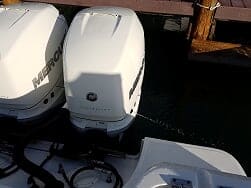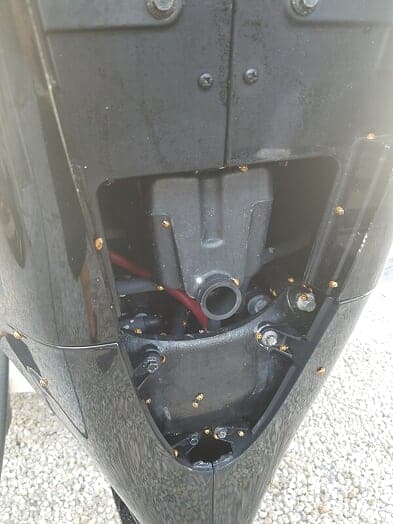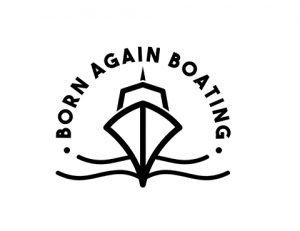You got the boat packed with your gear and your best friends. When you go to start the engine, it simply clicks. Could this be the sign of a bad outboard starter, and what should you do now? As to not disappoint anyone, you want to figure out the problem – and fast.
When an outboard starter fails, it will turn the engine over slowly, not at all, or make a clicking sound. It can also spin extremely fast but not engage or turn the flywheel of the engine.
We will take a closer look at the outboard starter, discuss why it goes bad and tell you what you can do about it.
What is an Outboard Starter?
The starter is a device that cranks the engine to initiate operation with its own power. The motor is considered a feedback system, meaning it relies on the inertia from one cycle to start the next.
To begin the first cycle, the starter motor is required. By turning the key, the starter begins spinning and then in turn, spins the engine over.
Once the engine begins spinning, the combustion begins and will continue to run the engine without the need of the starter!

How Do I Know if My Outboard Starter is Bad?
In most cases, a bad outboard starter will produce a clicking noise when initiated.
When you turn the key or push the button, you might only get a clicking sound. In some situations, repeatedly trying to start the engine might produce success, while others will never get the engine going again without a repair.
If the starter is failing, it might also get hot.
However, when the starter appears bad, it could simply be a situation where the connections have failed or the solenoid is faulty.
What are the Signs of a Bad Starter?
The tell-tale sign of a bad starter is the clicking noise that you hear when you attempt to start the engine.
To determine if the starter is what is causing your problem, or another part, you must perform some troubleshooting.
How Do I Know if My Starter Motor Needs Replacing?
In addition to the starter, you must consider that the solenoid on the outboard engine has gone bad. This part is responsible for transmitting battery voltage to your starting motor.
The contact located inside the starter solenoid activates a circuit to open and allow electrical current to transmit from the battery to the boat’s starter.
This, in turn, starts the outboard engine. A faulty solenoid could prevent the starter from getting power, so ruling this out first before condemning your starter is a must!
To determine what’s causing your starting issue, follow these steps.
Step #1: Connect Voltmeter
Place your voltmeter’s positive lead to the positive terminal of the battery. Connect the voltmeter’s negative lead to the bare metal located on the engine.
You should see a minimum of 12.6 volts. If you get a reading less than this, it’s likely that your battery isn’t fully charged, which could be causing your issues.
Step #2: Inspect the Cabin Fuse Box
You want the starter fuse or relay to sit tight in the connectors. You also don’t want the fuse element to be blown.
If you see a bad fuse, replace it immediately.
You can also exchange the starter relay with a similar one in the box and re-test operation. If the engine starts, you know what’s causing the problem.
Step #3: Remove Cowling
Take off the engine cowling or hood. You want to undo the handles holding the cowling on. Then pull it off the engine after the handles are free.
Deactivate your lanyard cut-off switch, so the engine doesn’t get accidentally started.
Step #4: Test Solenoid
The solenoid is located directly next to the starter, which is on the engine block. If you can’t find it, reference your owner’s manual.
Put the voltmeter’s positive lead to the large battery connection on the solenoid. This is typically a red wire. Put the ignition key into the ON position.
You should see 12.6 volts or battery voltage present.
Now, place the positive lead on the smaller wire terminal of the solenoid. This wire is typically yellow or purple.
Place the negative lead to a ground source. Have someone else turn the key.
Your voltmeter should read at least 12.6 volts. You also want to listen for the solenoid to click and the starter should spin.
If you don’t have 12.6 volts and you face a starter that doesn’t spin, your problem might be the ignition switch itself.
Finally, put a jumper wire on the large battery terminal of the solenoid. Leave the ignition key on.
Put the other end of the jumper wire to the second solenoid post. If you have three posts, you want to jump the two largest terminal posts.
If you don’t hear any clicking and the starter refuses to spin, there is a short in the solenoid requiring a replacement.
Otherwise, if the solenoid clicks but the starter does not spin, it’s your starter that has an internal short, requiring a replacement.
When the Outboard Motor Won’t Start

Outboards are complex but operate on basic four-stroke technology. When the outboard boat engine doesn’t turn over, it could be a bad outboard starter or one of many other issues.
The outboard requires the following elements to run correctly:
- Properly timed ignition
- Right ratio of fuel/air
- Compression
- Exhaust
While troubleshooting a modern outboard can be complicated, it’s not impossible to do on your own. By following this flow chart, you might be able to isolate the issue. At worst, you will have more information to share with your boat mechanic.
1. Start with Lights & Gauges
When you turn your key to start the engine but nothing occurs, leave the key “ON.” Don’t turn it to the start position.
Now is a good time to determine if the gauges and lights are operating.
If nothing is working, make sure your battery switch (if you have one) is placed at “ON” or “BOTH.”
2. Evaluate the Gear Shift Position
If the other accessories are working, but the engine doesn’t start, check your gear shift. It must be in the neutral position because the majority of outboards won’t crank if the engine is left in gear.
3. Look at Emergency Shutoff
Is the emergency shutoff cap in place? With some setups, the engine won’t crank if the kill switch is out.
4. Inspect The Battery Cables
Use a voltmeter to check your battery. You should have a minimum of 12 volts. Otherwise, you might not be able to engage the starter.
As long as the battery is charged, you can evaluate the cables running from your battery to the boat’s engine. Sometimes, the connections become loose over time or they end up corroded.
If corrosion is the issue, use a simple baking soda mixture to clean the battery terminals.
5. Check Fuses
The outboard’s main fuse is in a large red holder found on the engine’s wiring harness or in a fuse panel with other fuses to miscellaneous parts on the engine. Most times, it’s a simple 20-amp fuse that isn’t difficult to replace.
Otherwise, if the fuse seems good, you want to check the boat’s main power plug connecting the engine wiring to the vessel.
You can also inspect the neutral switch, which is found in the control box. This switch is connected with either yellow or red/yellow-striped wires.
6. Inspect the Primer Bulb
There must be enough fuel getting to the engine. If you pump the primer bulb, it should become firm after a few squeezes. Keep in mind, not every boat has a primer bulb.
If this doesn’t become firm, you might have a leak somewhere in the line, filter, tank or engine. It could also be due to a bad valve located inside the bulb itself.
7. Inspect Filters
Pull out the filters and look for sediment or water.
8. Look at Fuel Line Couplings
Inspect the fuel line couplings to ensure they are properly locked and seated. You should also look at the O-rings. One torn O-ring might introduce air to the fuel and prevent the engine from starting.
Additionally, if the engine comes with an electric primer, you should be able to remove the tiny fuel hose that goes from it to the carburetor or intake. While someone else is operating the primer, watch it to see if any fuel squirts out.
9. Replace Spark Plugs
You can replace the spark plugs to see if that helps as well. There are many times where the spark plugs have been left for many years and hours of use.
And over time they can become fouled out or shorted. Not allowing the engine to get proper spark to the cylinders to allow the engine to run.
10. Inspect the Exhaust Outlet

Look for blockage in the exhaust outlet. When the engine can’t exhaust burnt fuel and air, it ceases to start.
This often occurs after the outboard has been stored for the winter. Look for large rodent nests in the spring within the exhaust that causes a blockage.
11. Check Engine Compression
You may want to perform an outboard compression test at this point in time. Just to make sure the engine is still a viable engine and hasn’t blown up!
If your outboard is lacking compression, you probably won’t be able to fix it at the boat ramp. At this point, it might be time to call your mechanic.
How to Start a Boat with a Bad Outboard Starter
Until you get the time to repair your boat, you might simply want to start it in a different way. There is a workaround if you find that your starter is bad.
Some people tap the starter with a small hammer while another person turns the key. However, this isn’t always wise and is often frowned upon, but sometimes it can get the starter to engage to allow you to start the engine.
You can also apply direct power to the solenoid. This bypasses the solenoid with positive voltage, which should engage the starter. You should hear the engine crank and you will probably see a spark.
We have to discourage against this practice, even though it works, as you could fry something very easily. However, we also understand that you could be stuck somewhere, requiring a quick start!
Check Us Out!
If you love all things boating, you will enjoy our YouTube channel, which offers more step-by-step guides and practical tips.
Additionally, you can check out the other articles on our site for how-to information regarding your outboard and boat.
